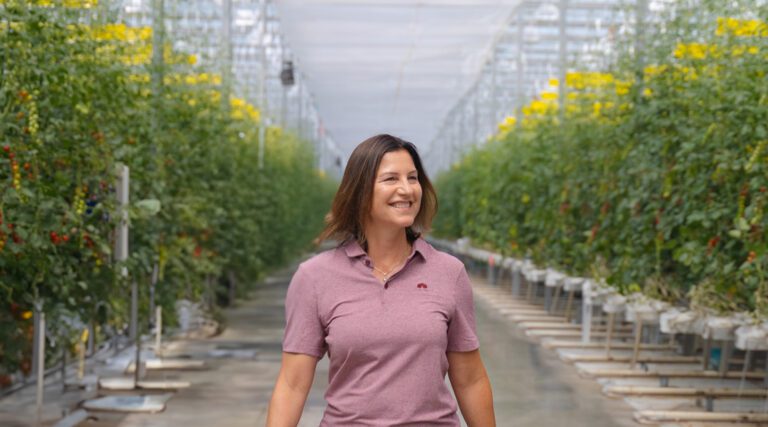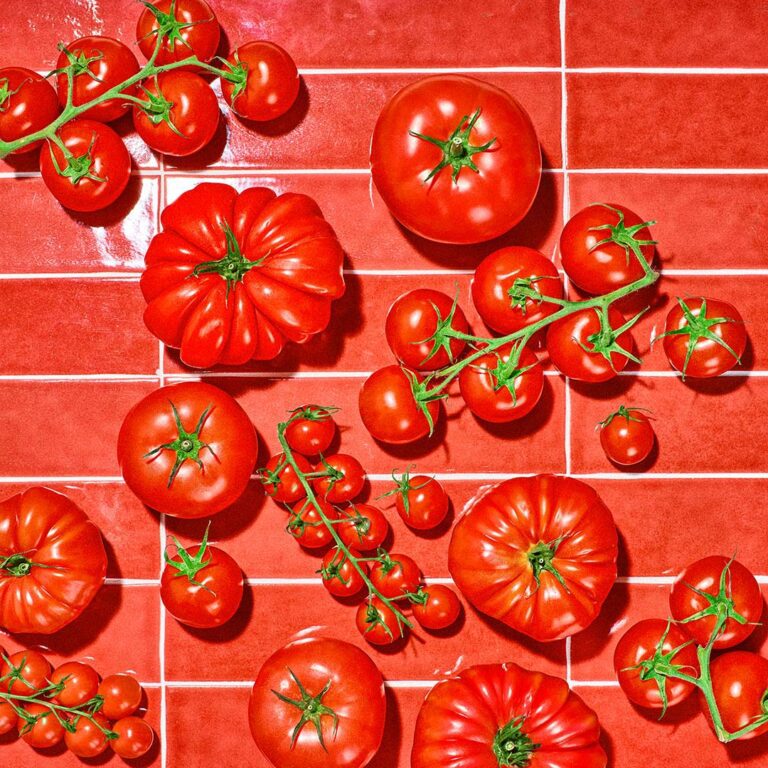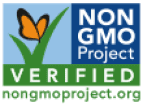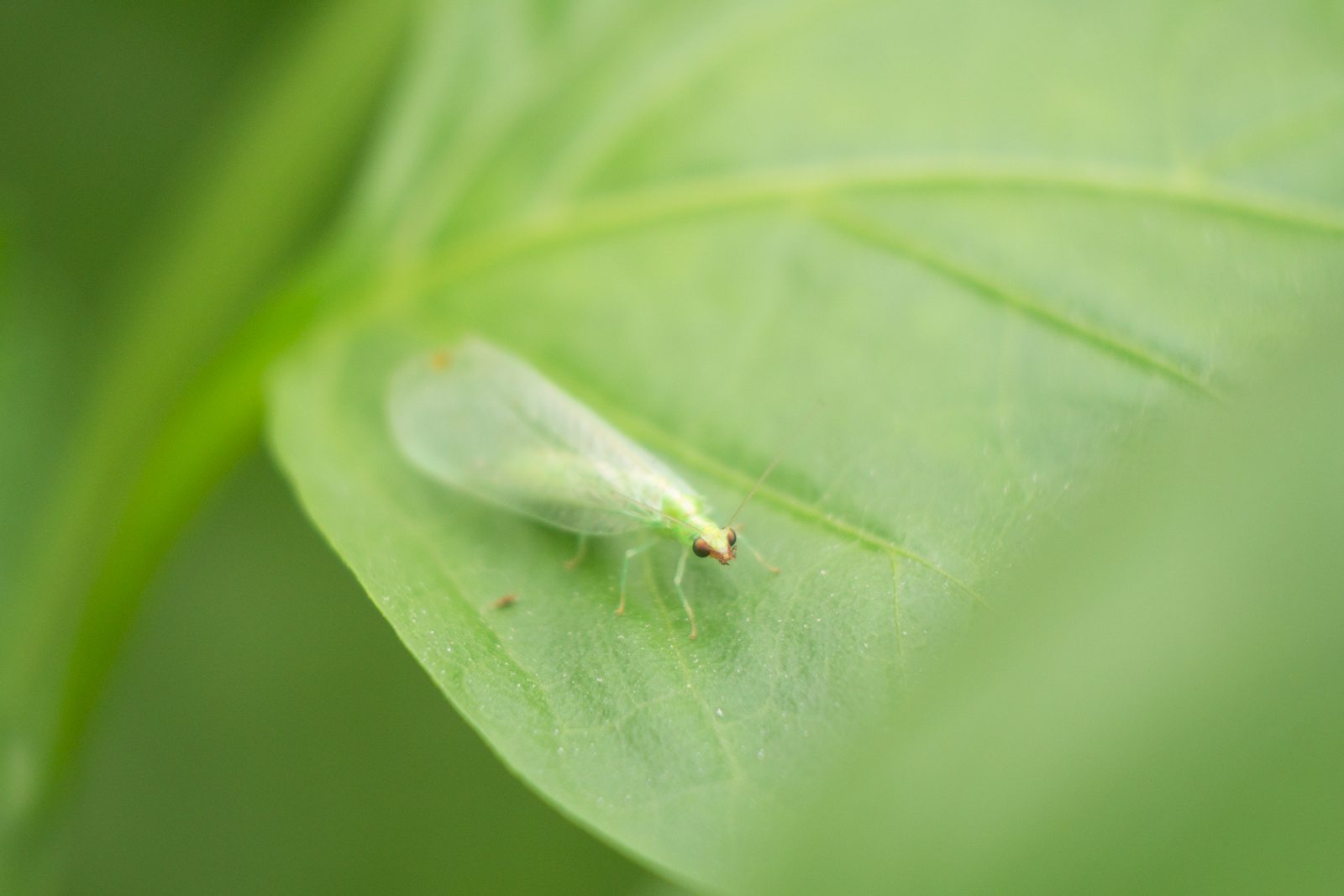
The Buzz About Our Bugs
Fact is, any crop, whether it’s grown in a greenhouse or a field, has to be supported by a strong Integrated Pest Management (IPM) program to ensure plants stay healthy, protected and so it gets to you in peak condition. Without a strong IPM program, pest populations can easily get out of control and destroy a crop in record time.
The various techniques used in an organized IPM program work hand in hand to keep bad bugs at bay. Let’s take a closer look at the different aspects and benefits of a robust IPM strategy, as well as the strategies we’re using to build a bigger and better bug program at Nature Fresh Farms.
An Overview of our IPM Program
Our IPM program is multifaceted, which means it uses a range of strategies to keep pest populations under control. These strategies include scouting, introducing beneficial biologicals, setting traps, implementing biosecurity measures, and using natural pollinators.
Our Bio Scout Team
Our Bio Scouts are very important members of our Growing team–they can distinguish between good and bad bugs and even recognize signs of pest damage like the back of their hand! Bio Scouts get expert training to accurately identify different pest species, as well as spot how different plants react to pest damage.
Every day, our Scouts patrol the greenhouse rows to identify any pest damage within the crops. If they discover an issue, our Scouts immediately notify our Growers so the proper actions can be taken. Without the keen eyes of our Bio Scouts, many of the pests that find their way into our greenhouses could go undetected and cause damage to our plants.
Meet Our First Line of Defense
Beneficial biologicals – also known as good bugs – are our first line of defence against pests inside our greenhouses. Every one of our good bugs is unique: they each fight different bad bugs, require special application processes, and have distinct characteristics. By understanding the ins and outs of each good bug we have in our bug brigade, we can use them more effectively to support our overall IPM program.
Here is a quick look at some of the good bugs we use in our greenhouses:
- Cucumeris – This is a good bug we apply to our crop as a preventative measure,as well as for spot treatment throughout the regular season. These bugs are applied to plants using a paper sachet that is hung directly on a plant’s stalk. Cucumeris bugs feed on two main pests: Thrips and Spider Mites.
- Lacewing – This flying bug is applied once at the beginning of a new season to hunt down Aphids, a very destructive bad bug. When introducing Lacewing bugs into the greenhouse, we get one tube for every 2.5 acres that contains anywhere from 10,000 to 20,000 Lacewing insects! Our Bio Scouts simply poke a hole in the top of the tube and release the adult bugs throughout the entire greenhouse.
- Persimilis – This unique beneficial bio is typically applied throughout the season as issues with Spider Mites arise. What makes this bug special is that it doesn’t have eyes–it relies solely on its other senses (which interpret a plant’s stress signals) to move around our plants and locate bad bugs.
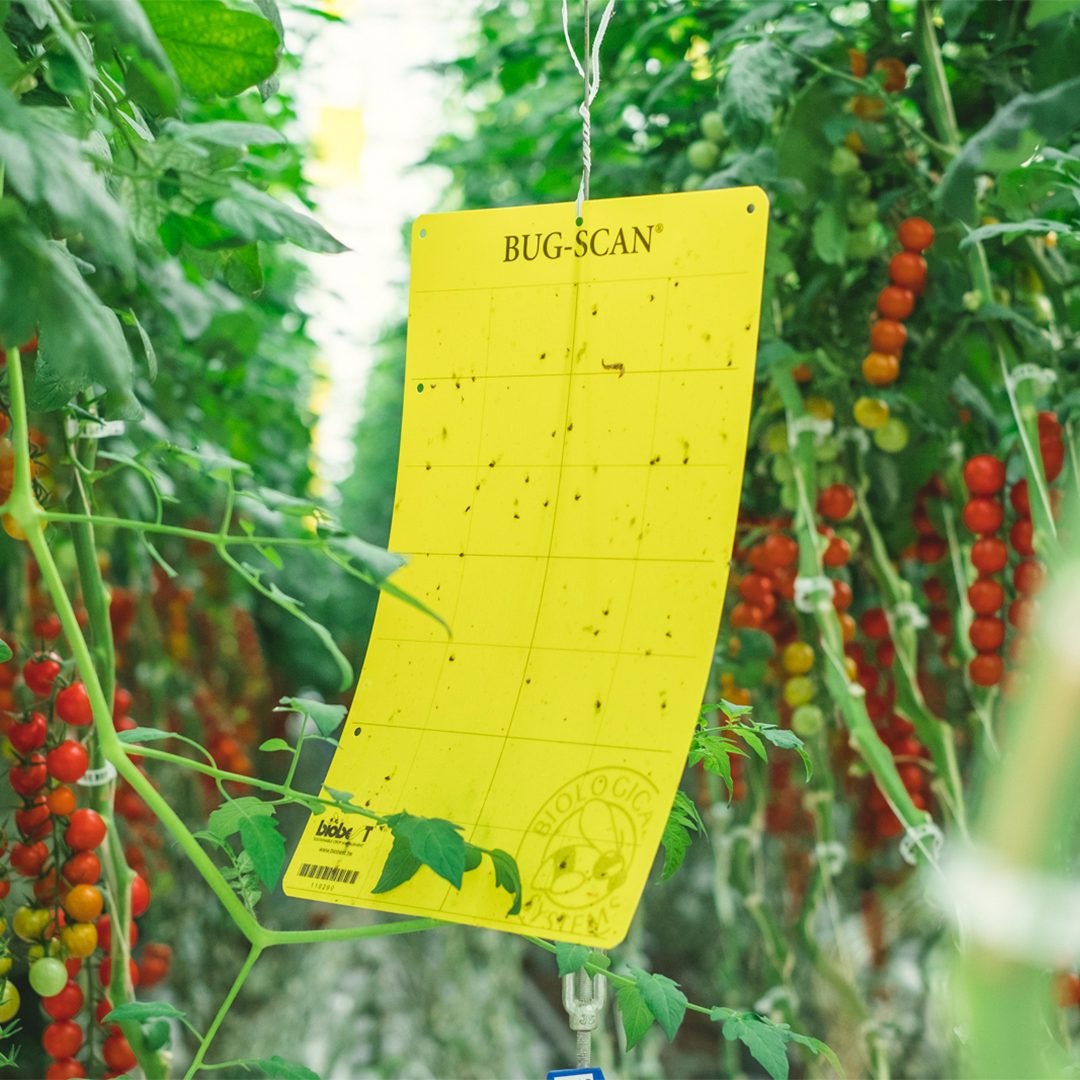
Some of the bad bug traps we use in our greenhouses include sticky cards and sticky tape. Vibrant sticky card traps are hung throughout the greenhouse to attract bad bugs. Once a bad bug lands on the surface of the card, they stick to it and can’t escape. We use yellow, blue, and white sticky cards as different bad bugs are attracted to different colors.
Our sticky tape functions similarly to our sticky cards, but the tape runs the length of our greenhouse walkways. The tape we use is yellow with a swirly pattern on it; this design attracts bugs to land on the surface and get stuck.
Biosecurity Practices
Our team members and visitors also need to do their part to protect our plants from harmful pests. To help limit pests from travelling into our greenhouses on people’s clothing or shoes, we have implemented special biosecurity protocols that all people entering the facilities are required to follow.
These biosecurity protocols include:
- Suiting up in personal protective equipment
- Using automatic boot scrubbing stations
- Traveling in designated areas within the facility
By following these protocols, people entering our facilities can do their part in ensuring pests are managed!
Natural Pollinators
There is one other bug that can be found freely flying around our greenhouses–the Bumble Bee! As a natural pollinator, the Bumble Bee plays an important role in our Tomato greenhouses. From sun-up to sun-down, our 1.4 million Bumble Bees naturally pollinate our plants – over 10 million tomato flowers every week!
A Bumble Bee’s accuracy rate is just shy of 100%, meaning they ensure almost every single Tomato flower in our greenhouses is pollinated. Although manual pollination can be performed by humans, the numbers speak for themselves: Bumble Bees are much more efficient and accurate at pollinating than we’ll ever be.
By introducing a natural pollinator into our greenhouses that lives in harmony with all our good bugs, we can create and maintain a balanced ecosystem that supports our overall IPM strategy.
Benefits of a Robust IPM Program
One of the most important benefits of having a robust IPM strategy is being able to limit your use of chemical pesticides to combat pests. When all integrated pest management strategies – including applying beneficial biologicals, implementing biosecurity measures, and using traps – are working together in harmony, using pesticides becomes a last resort.
While using a robust IPM program to avoid pesticide use is important in all our greenhouse facilities, avoiding the use of chemical pesticides is especially important in Organic crops. This is because the use of good bugs to control or eliminate bad bugs is one of the few pest management strategies that can be used to protect organically grown plants. As our company focuses more on producing Organic crops, the need for maintaining a strong IPM strategy will continue to grow!
We pursue the highest standards in producing, packaging, and delivering our products, ensuring that every step of the process is safe and sustainable. Yet another reason to feel good about choosing Nature Fresh Farms products for your family.




